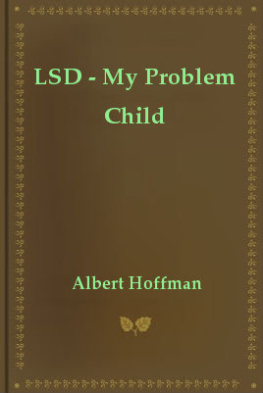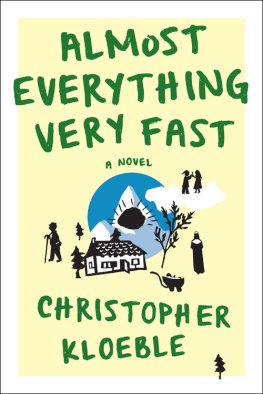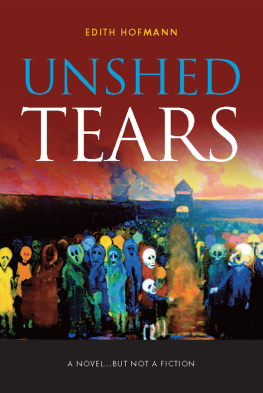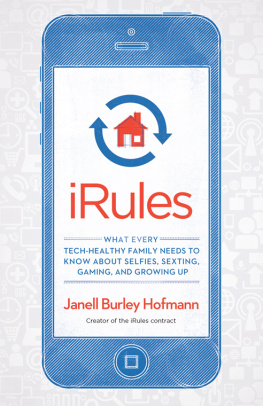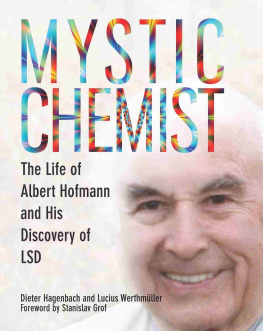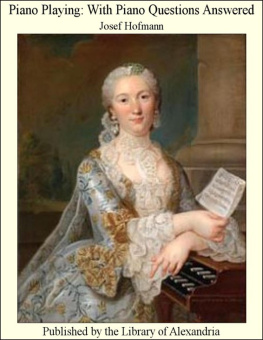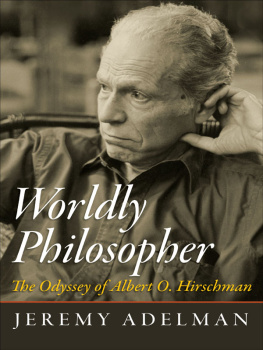LSD - My Problem Child Albert Hofmann
Translator's Preface
Numerous accounts of the discovery of LSD havebeen published in English; none, unfortunately, have beencompletely accurate. Here, at last, the father of LSD details thehistory of his "problem child" and his long and fruitful career asa research chemist. In a real sense, this book is the inside storyof the birth of the Psychedelic Age, and it cannot be denied thatwe have here a highly candid and personal insight into one of themost important scientific discoveries of our time, the signiflcanceof which has yet to dawn on mankind.
Surpassing its historical value is the immensephilosophical import of this work. Never before has a chemist, anexpert in the most materialistic of the sciences, advanced aWeltanschauung of such a mystical and transcendental nature. LSD,psilocybin, and the other hallucinogens do indeed, as AlbertHofmann asserts, constitute "cracks" in the edifice ofmaterialistic rationality, cracks we would do well to explore andperhaps widen.
As a writer, it gives me great satisfaction toknow that by this book the American reader interested inhallucinogens will be introduced to the work of Rudolf Gelpke,Ernst Junger, and Walter Vogt, writers who are all but unknownhere. With the notable exceptions of Huxley and Wasson, English andAmerican writers on the hallucinogenic experience have been farless distinguished and eloquent than they.
This translation has been carefully overseen byAlbert Hofmann, which made my task both simpler and more enjoyable.I am beholden to R. Gordon Wasson for checking the chapters onLSD's "Mexican relatives" and on "Ska Maria Pastora" for accuracyand style.
Two chapters of this book - "How LSDOriginated" and "LSD Experience and Reality" - were presented byAlbert Hofmann as apaperbefore the international conference"Hallucinogens, Shamanism and Modern Life" in San Francisco on theafternoon of Saturday, September 30, 1978. As a part of theconference proceedings, the first chapter has been published in theJournal of Psychedetic Drugs, Vol. 11 (1-2), 1979.
JONATHAN OTT Vashon Island, Washington
FOREWORD
There are experiences that most of us arehesitant to speak about, because they do not conform to everydayreality and defy rational explanation. These are not particularexternal occurrences, but rather events of our inner lives, whichare generally dismissed as figments of the imagination and barredfrom our memory. Suddenly, the familiar view of our surroundings istransformed in a strange, delightful, or alarming way: it appearsto us in a new light, takes on a special meaning. Such anexperience can be as light and fleeting as a breath of air, or itcan imprint itself deeply upon our minds.
One enchantment of that kind, which Iexperienced in childhood, has remained remarkably vivid in mymemory ever since. It happened on a May morning - I have forgottenthe year - but I can still point to the exact spot where itoccurred, on a forest path on Martinsberg above Baden, Switzerland.As I strolled through the freshly greened woods filled with birdsong and lit up by the morning sun, all at once everything appearedin an uncommonly clear light. Was this something I had simplyfailed to notice before? Was I suddenly discovering the springforest as it actually looked? It shone with the most beautifulradiance, speaking to the heart, as though it wanted to encompassme in its majesty. I was filled with an indescribable sensation ofjoy, oneness, and blissful security.
I have no idea how long I stood therespellbound. But I recall the anxious concern I felt as the radianceslowly dissolved and I hiked on: how could a vision that was soreal and convincing, so directly and deeply felt - how could it endso soon? And how could I tell anyone about it, as my overflowingjoy compelled me to do, since I knew there were no words todescribe what I had seen? It seemed strange that I, as a child, hadseen something so marvelous, something that adults obviously didnot perceive - for I had never heard them mention it.
While still a child, I experienced several moreof these deeply euphoric moments on my rambles through forest andmeadow. It was these experiences that shaped the main outlines ofmy world view and convinced me of the existence of a miraculous,powerful, unfathomable reality that was hidden from everydaysight.
I was often troubled in those days, wonderingif I would ever, as an adult, be able to communicate theseexperiences; whether I would have the chance to depict my visionsin poetry or paintings. But knowing that I was not cut out to be apoet or artist, I assumed I would have to keep these experiences tomyself, important as they were to me.
Unexpectedly - though scarcely by chance - muchlater, in middle age, a link was established between my professionand these visionary experiences from childhood.
Because I wanted to gain insight into thestructure and essence of matter, I became a research chemist.Intrigued by the plant world since early childhood, I chose tospecialize in research on the constituents of medicinal plants. Inthe course of this career I was led to the psychoactive,hallucination-causing substances, which under certain conditionscan evoke visionary states similar to the spontaneous experiencesjust described. The most important of these hallucinogenicsubstances has come to be known as LSD. Hallucinogens, as activecompounds of considerable scientific interest, have gained entryinto medicinal research, biology, and psychiatry, and later -especially LSD also obtained wide diffusion in the drugculture.
In studying the literature connected with mywork, I became aware of the great universal significance ofvisionary experience. It plays a dominant role, not only inmysticism and the history of religion, but also in the creativeprocess in art, literature, and science. More recent investigationshave shown that many persons also have visionary experiences indaily life, though most of us fail to recognize their meaning andvalue. Mystical experiences, like those that marked my childhood,are apparently far from rare.
There is today a widespread striving formystical experience, for visionary breakthroughs to a deeper, morecomprehensive reality than that perceived by our rational, everydayconsciousness. Efforts to transcend our materialistic world vieware being made in various ways, not only by the adherents toEastern religious movements, but also by professionalpsychiatrists, who are adopting such profound spiritual experiencesas a basic therapeutic principle.
I share the belief of many of my contemporariesthat the spiritual crisis pervading all spheres of Westernindustrial society can be remedied only by a change in our worldview. We shall have to shift from the materialistic, dualisticbelief that people and their environment are separate, toward a newconsciousness of an all-encompassing reality, which embraces theexperiencing ego, a reality in which people feel their oneness withanimate nature and all of creation.
Everything that can contribute to such afundamental alteration in our perception of reality must thereforecommand earnest attention. Foremost among such approaches are thevarious methods of meditation, either in a religious or a secularcontext, which aim to deepen the consciousness of reality by way ofa total mystical experience. Another important, but stillcontroversial, path to the same goal is the use of theconsciousness-altering properties of hallucinogenicpsychopharmaceuticals. LSD finds such an application in medicine,by helping patients in psychoanalysis and psychotherapy to perceivetheir problems in their true significance.
Deliberate provocation of mystical experience,particularly by LSD and related hallucinogens, in contrast tospontaneous visionary experiences, entails dangers that must not beunderestimated. Practitioners must take into account the peculiareffects of these substances, namely their ability to influence ourconsciousness, the innermost essence of our being. The history ofLSD to date amply demonstrates the catastrophic consequences thatcan ensue when its profound effect is misjudged and the substanceis mistaken for a pleasure drug. Special internal and externaladvance preparations are required; with them, an LSD experiment canbecome a meaningful experience. Wrong and inappropriate use hascaused LSD to become my problem child.
Next page
